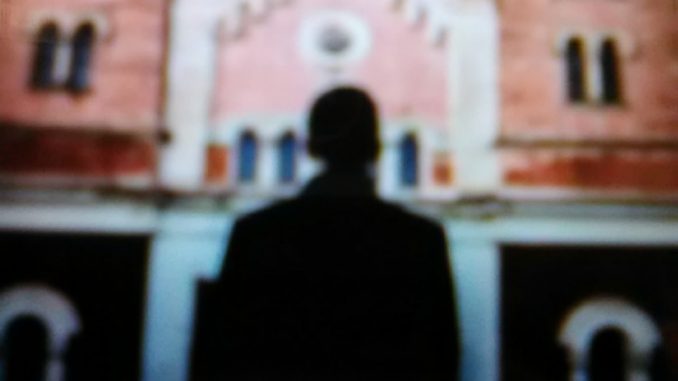
The Pew Research Center headline could only hint at the flood of news stories to come: “In U.S., Decline of Christianity Continues at Rapid Pace.”
Aggregating surveys conducted between 2007 and 2019, Pew calculated that the proportion of Americans calling themselves Christians had declined by 12 points, down to merely 65 percent, while the religiously unaffiliated, “consisting of people who describe their religious identity as atheist, agnostic or ‘nothing in particular,’” increased from 17 to 26 percent.
The Washington Post summarized the results: “The portion of Americans with no religious affiliation is rising significantly, in tandem with a sharp drop in the percentage that identifies as Christians” with both Protestant and Catholic ranks “losing population share.” “In 2009, regular attenders — those who attend religious services at least once a month — outnumbered those who attend services only occasionally or not at all by a 52%-to-47% margin.” Today, 54 percent say they attend religious services a few times a year or less, while only 45 percent go more often.
It seems that after 2,000 years, it’s all coming to an end.
Well, maybe. Let’s look a bit closer at the data, starting with all those atheists and agnostics. They accounted for 2 percent of the population each in 2007, and today report 4 percent and 5 percent respectively—basically within the margins of error. The proper academic conclusion is that these groups have stayed pretty much the same over time, and remain very small.
The “nothing in particular” category (or Nones) is a larger and more diverse group, and the statistics do show that they have increased from 12 to 17 percent, likewise stretching the margin of error. But more important is that Pew itself had earlier reported that 26 percent of Nones pray daily and an additional 22 percent pray weekly or monthly, that only 22 percent do not believe in God, and that from year to year many shift back and forth between identifying with the Christian and Nones categories. All of this makes them more religious than atheist, if not exactly orthodox.
The reported declines in Protestants and Catholic identifications are likewise more interesting when broken down. Catholic identification is reported as declining from 24 to 20 percent, again minor and barely within the reported error margin. Protestant identification, meanwhile, is described as declining from 51 to 43 percent, and down a more substantial 17 percent among Democrats, Millennials, and Northeasterners, with fewer losses among Republicans, Gen. Xers and Midwesterners. Mainline Protestant denominations accounted for most of the decline, while born-again sects actually have increased. Denominational decline is a very mixed bag.
What about more active religious affiliation? Church attendance certainly has declined since the conservative 1950s, especially among Catholics, but it’s rather flattened out since then, culminating in the slight dip over the last decade reported in the current study. As Pew notes, “Self-described Christians report that they attend religious services at about the same rate today as in 2009.” The study shows little decline or even a small increase among African Americans, Hispanics, Protestant evangelicals, and Republicans. Actually, only 12 percent of the oldest generation, 15 percent of the middle-aged, and 22 percent of Millennials never go to church. A more recent Pew study reported that a majority of pre-Millennials said they regularly observe religious dress or jewelry worn by fellow students in their public schools.
Gallup likewise found that those who attend church once a month or more had dropped from 58 percent in 1992 to 43 percent today, and that those never attending had gone up from 14 to 28 percent. But it also found that attendance over the last week was 36 percent today, as opposed to 40 percent in 1992, basically no change. Church or synagogue membership, meanwhile, was down from 70 percent since the 1980s, yet half of all Americans were still members in 2019. Gallup also found a decline in personal identification with a religion, but only 19 percent with no religious affiliation (although 7 percent of those also said they were formal members of a religious organization).
On the other hand, Gallup reports that 58 percent of Americans said that religion was very important in their lives in 1992 versus 50 percent in 2018, while another 21 percent today said it was fairly important and only 27 percent said it had no importance. When asked whether religion could solve “all or most problems today” or whether it was “out of date,” 49 percent chose the former and 38 percent the latter. Only 29 percent said they had little or no confidence in religion. Belief in God or a universal spirit stands at 89 percent today, close to the 94 percent back in 1976. And two thirds of Americans still identify as Christian, including among Millennials.
Pew calculates worldwide that—mainly due to higher death rates and lower number of children—people with no religion will decline relative to those who are religious by the year 2060 and that Christianity will remain the world’s largest religion.
So sorry to rain on the media parade, but while there has been a recent decrease in formal religious affiliation and participation in the U.S., mostly among the youngest, it has pretty much been within a narrow band that’s fluctuated over the last half century but maintained a participation and membership total surpassing any other type of social organization. That even includes watching the Super Bowl!
*story by The American Conservative